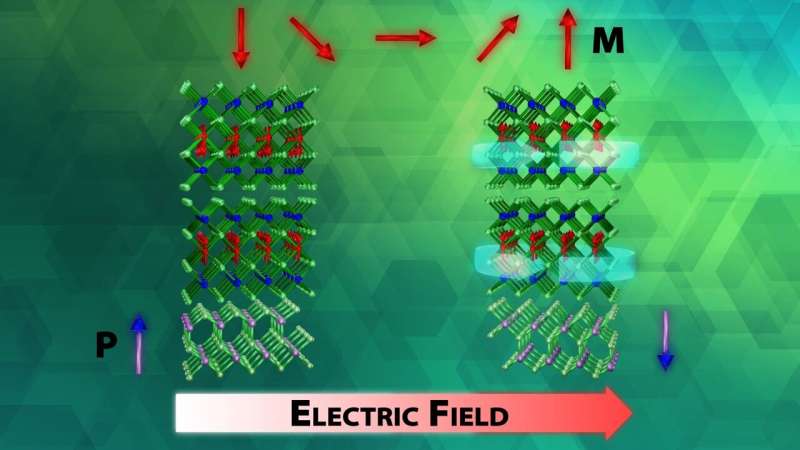This article has been reviewed according to Science X's editorial process and policies. Editors have highlighted the following attributes while ensuring the content's credibility:
fact-checked
trusted source
proofread
Scientists describe a novel way to manipulate exotic materials

An advance in a topological insulator material—whose interior behaves like an electrical insulator but whose surface behaves like a conductor—could revolutionize the fields of next-generation electronics and quantum computing, according to scientists at Oak Ridge National Laboratory.
Discovered in the 1980s, a topological material is a new phase of material whose discoverers received a Nobel Prize in 2016. Using only an electric field, ORNL researchers have transformed a normal insulator into a magnetic topological insulator. This exotic material allows electricity to flow across its surface and edges with no energy dissipation. The electric field induces a change in the state of matter.
The ORNL scientists have published their findings in 2D Materials.
"The research could result in many practical applications, such as next-generation electronics, spintronics and quantum computing," said ORNL's Mina Yoon, who led the study.
Such matter could lead to high-speed, low-power electronics that burn less energy and operate faster than current silicon-based electronics.
More information: Wei Luo et al, Non-volatile electric control of magnetic and topological properties of MnBi2Te4 thin films *, 2D Materials (2023). DOI: 10.1088/2053-1583/accaf7
Provided by Oak Ridge National Laboratory





















